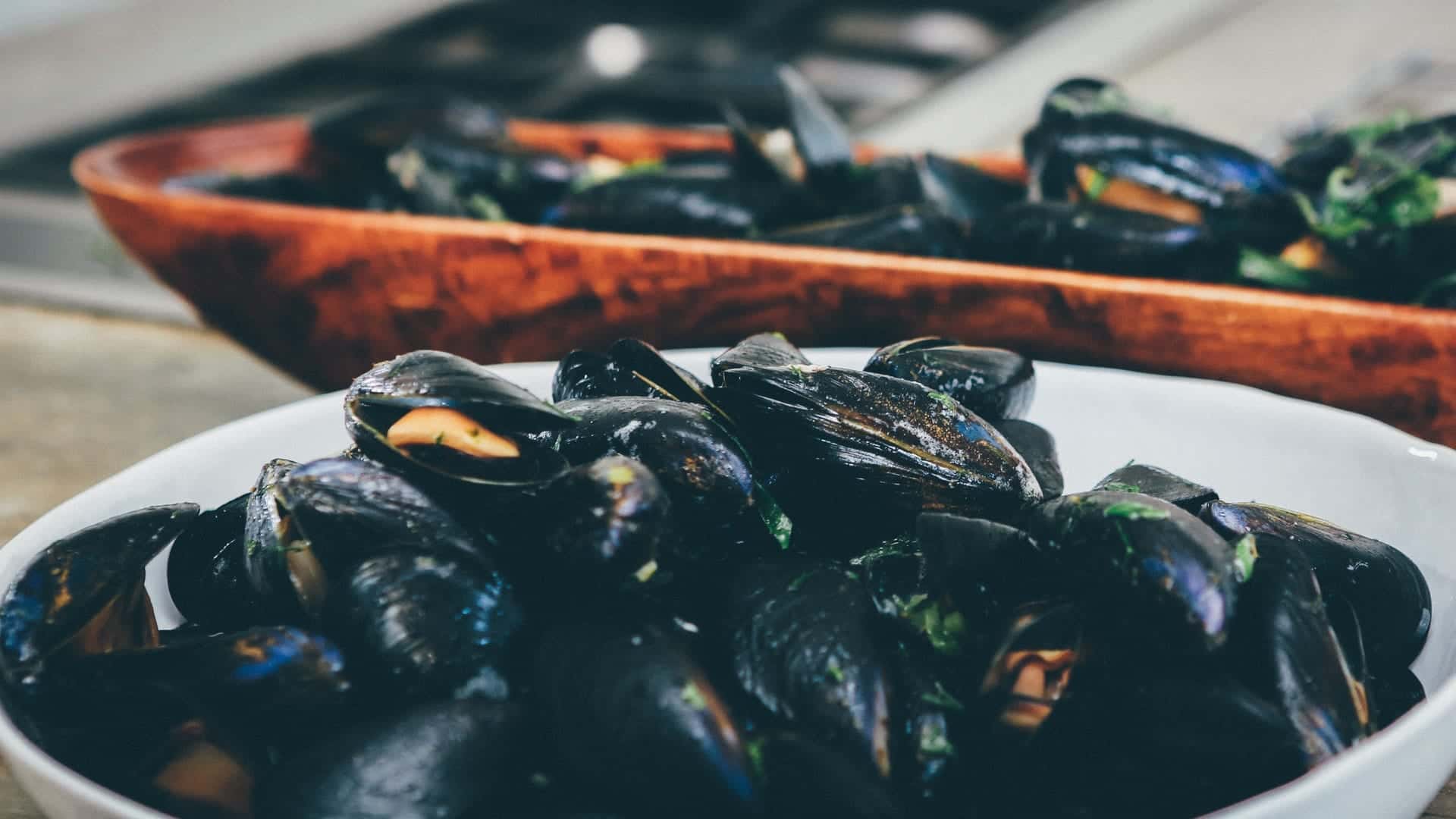
Maine mussels may be the most versatile shellfish on the market. The low-cost, great-tasting seafood is easy to prepare and has recently been showcased as one of the best sustainable seafood choices. Responsibly farmed mussels are easy to grow and grow quickly in just about any saltwater environment. Inexpensive to produce or harvest, mussels barely negatively impact the environment.
Labeling mussels as a sustainable seafood choice implies more than just an environmental awareness of a given resource. Sustainability is a business model that must satisfy the present needs of a community to enjoy a given resource without adversely jeopardizing or affecting the needs of future generations to enjoy that given resource. One of Maine’s best examples of sustainable seafood practices relates to the lobster industry. When Maine fishermen realized the economic impact of overfishing lobster in the late 19th century, they took sustainable action that saved the industry, their livelihoods, and their communities that continue to this day.
In Maine, blue mussels are harvested commercially. In the wild, the abundant, bivalve mollusks are found in the intertidal and shallow subtidal zone. They are also raised on aquatic farms. Farmed or wild mussels’ environmental cost and impact might just be second-to-none. They act as one of the more significant filter feeders in the ocean—cleaning the water they grow. Mussels are pretty much disease-free and require no antibiotics. Farmed mussels are not subjected to the pollution that wild mussels are. Whether farmed or wild, mussels do not rely on a special diet to grow. They consume phytoplankton and other excess microscopic nutrients found in their natural habitat. As the feed, those feeding activities act to filter and clean the water and also produce a high-quality protein food source.
Mussels vs. Other Shellfish
This is the beauty of mussels –they will grow just about anywhere underwater. This is not the case with other bivalves. Clams and oysters need a bed of mud or sand to grow in. Sea snails, specifically whelks, need space to roam around and forage. Scallops are free-swimming mollusks that sometimes attach themselves to various substrates such as rocks, but generally, they roam amongst the beds of seagrass found in shallow sandy bottoms.
As for mussels? The answer is simple: they grow wherever nature places them in the water. Drop a line of rope in the sea, and there is a good chance that mussels will attach themselves to it. Mussels grow “beards,” mesh-like silky filaments that grasp hold of anything. The filaments are byssal threads, secreted tufts of fibrous proteins and keratins that allow mussels to fasten tightly to any underwater surface—a rope, shards of rocks, or any solid object.
In addition to cleaning the water through filter-feeding, mussel shells absorb excess carbon from their environment. Like other shellfish such as oysters, clams, scallops, and snails, mussel shells are made of calcium carbonate. But mussel shells consist of the highest percentage of carbon per dry weight. In conditions where high levels of ocean acidification occur, studies have found that mussels and other shellfish will grow thicker shells to absorb the excess carbon in the water. Recycling initiatives are underway in communities worldwide to return quantities of shells to coastal and subtidal regions. Building shell reefs help reduce the acidification of ocean waters. Shell reefs also provide the spawn of native mussels and oysters, the larvae, a reef base to grow on.
Aquatic Mussel Farms in the Gulf of Maine
In Maine, aquatic mussel farms obtain leases from the state. The farms raise blue mussels for study and commercial purposes. Leases grant exclusive use of public waters for an area no greater than 100 acres for up to 20 years. Young mussels can be cultivated in the wild or grown on ropes submerged in culture tanks, protecting them from storms and predators. Once a certain size has been reached, they are placed in ocean pens to mature. As of 2020, there are 28 commercial leases and 4 scientific leases for blue mussel aquatic farms totaling 350 acres. Half of the commercial leases reporting commercial harvest from 2018 yielded 2.1 million pounds valued at $3.2 million.
Wild Maine Mussels: A Winter Harvest
Wild mussels are harvested throughout the year, though most mussel fishing occurs in winter when the meat quality is at its best. Wild mussel yields have fluctuated over the past several years, from a high of 2.4 million pounds in 2015 to a low of 1.2 million pounds in 2017. The yield has steadily increased the per pound value from $.17 in 2015 to $.30 in 2019. The 2019 harvest of wild mussels yielded nearly 1.9 million pounds, valued at over $3.35 million compared to $2.46 million in 2015.
The Difference Between Farmed and Wild Harvest
Perhaps the biggest difference in farmed vs. wild harvest of mussels is the time it takes to grow. A mussel can take 7-12 years to obtain a length of 2-1/2 inches in the wild. Farmed mussels only take 18 to 24 months to reach a marketable size of 2.5 inches.
In this light, aquatic farming of mussels offers a sustainable seafood alternative. Responsibly farmed mussels are easy to grow anywhere and rapidly. This prevents wild mussels from being overfished, allowing for a sustainable population of wild mussels, further reducing the environmental impact. Plus, those mussels now harvested in the wild yield a greater price for fishermen and their communities. In balance, from seed to harvest to your dinner table, mussels truly are a sustainable seafood choice.
Order FRESH live lobsters or fresh-picked meat online for delivery directly to your door! We also offer curbside pick-up at our South Portland location if you live locally – call for details and to place your order over the phone! Feel free to contact us— we would happily answer any of your questions.
